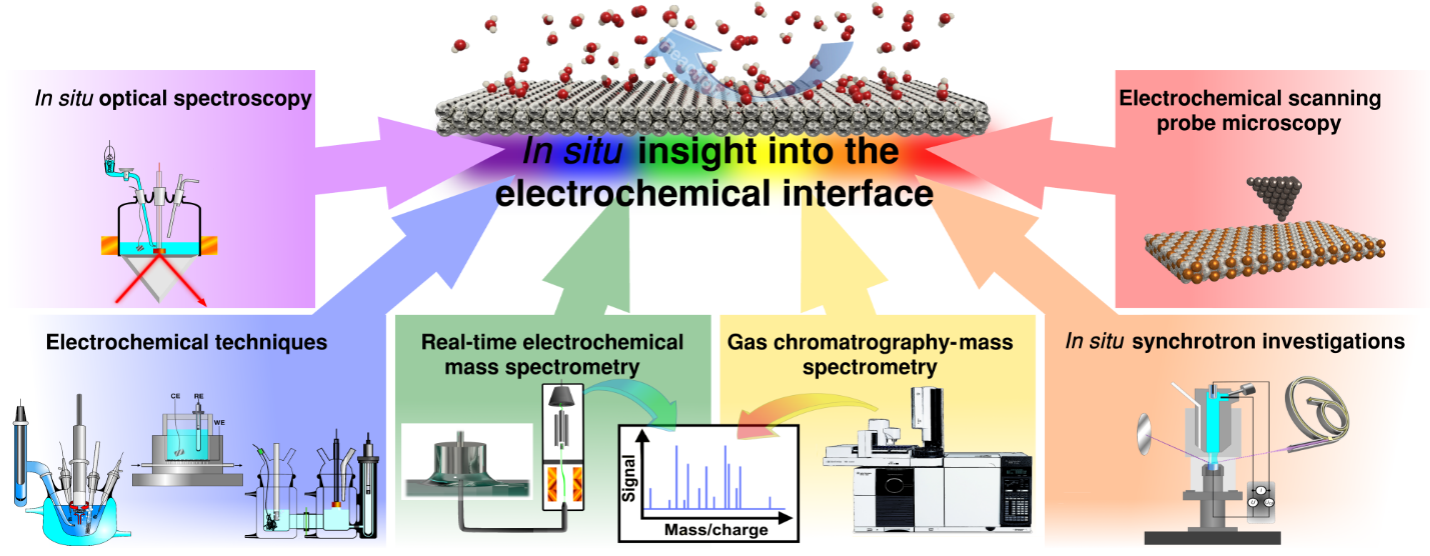In situ / operando characterisation of materials
Image adapated from: M. Escudero-Escribano et al., Current Opinion in Electrochemistry (2018).
To develop more efficient and stable electrocatalysts, it is essential to identify, understand, visualise and engineer the catalytically active phase under reaction conditions. We combine electrochemical methods with in situ vibrational spectroscopy such as Fourier transform infrared spectroscopy (FTIR), online mass spectrometry, gas chromatography, in situ scanning probe microscopy and in situ/operando synchrotron-based X-ray studies. In situ/operando investigations are key to elucidating the design principles and unveiling the structure-reactivity-selectivity relations and reaction mechanisms as well as the atomic-scale structure of the electrocatalyst materials.
Key publications:
G.S. Harlow*, E. Lundgen, M. Escudero-Escribano*, “Recent advances in surface x-ray diffraction and their potential for determining structure-sensitivity relations in single-crystal electrocatalysis”, Current Opinion in Electrochemistry, 2020, 23, 162.
M. Escudero-Escribano*, A.F. Pedersen, E.T. Ulrikkeholm, K.D. Jensen, M.H. Hansen, J. Rossmeisl, I.E.L. Stephens, I. Chorkendorff*, “Active site formation and stability of Gd/Pt(111) electrocatalysts for oxygen reduction: an in situ grazing incidence X-ray diffraction study”, Chemistry: A European Journal, 2018, 24, 12280.
Frontispiece and Hot Paper. Invited to the Young Chemists Special Issue 2018.

